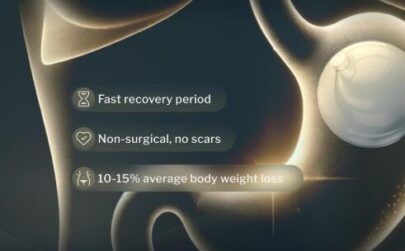The Complete Guide to the Gastric Balloon: Before and After
Learn all about the nonsurgical gastric balloon procedure for weight loss, including what to expect before and after the treatment.

Bariendo Team
Team @ Bariendo
Despite exercising and following a healthy diet, many individuals still struggle with losing weight. Others are unable to work out regularly or have little access to nutritious food choices. Regardless of the reason, weight loss can be challenging. Trying so hard to burn fat but seeing no results can be discouraging.
If you’re having trouble shedding unwanted pounds, you might have heard of a “gastric balloon” procedure. This is a popular option among those who need a little help losing weight but don’t want to undergo surgical procedures like gastric bypass or sleeve gastrectomy or take prescription weight-loss medication.
The gastric balloon is a nonsurgical weight loss procedure proven to result in significant weight loss. In this blog, we discuss the gastric balloon procedure as well as provide information on what to expect before and after the treatment.
What Is a Gastric Balloon, and How Does It Work?
Gastric balloons, also known as intragastric balloons, are temporary weight-loss devices that are placed in the stomach through a nonsurgical procedure. The procedure takes approximately 20 minutes. By taking up space in the stomach, they limit food intake and help regulate feelings of hunger, empowering patients to control their portions and reduce overall caloric intake.
With a decreased appetite and controlled portions, patients can experience significant weight loss as they follow a healthy diet and exercise regimen.
Gastric balloons are temporary. They are kept in place for a maximum of six months.
Before and After Gastric Balloon: What to Expect
Consultation With a Physician
Before going through the gastric balloon procedure, patients will typically undergo a thorough evaluation and consultation with their healthcare provider. This step includes a discussion of the following:
-
Previous weight loss attempts
-
Weight loss goals
-
Current health status
-
Blood work
-
Any medical conditions that may impact the patient’s eligibility
During the consultation, your healthcare provider will determine your eligibility for the procedure. Note that to be a candidate for gastric balloon, patients must have either a BMI of at least 30 or a BMI of 27 to 29.99 with one of the following conditions:
-
High blood pressure
-
Diabetes
-
High cholesterol
-
Sleep apnea
-
Fatty liver disease
This pre-procedure consultation is also an opportunity for you to ask any questions you may have about the gastric balloon. Your doctor will address your concerns and set your expectations regarding the procedure and the results.
Fasting
You will be asked not to eat or drink anything for 12 hours before the gastric balloon procedure. You may also be asked to take medication to prevent acid reflux from occurring while the procedure is being performed.
Informed Consent
Your healthcare professional will explain the benefits and risks of the gastric balloon procedure. They will also inform you of alternatives to the treatment. This is to help ensure you’re making an informed decision to undergo gastric balloon. Your doctor may proceed with the treatment once they have obtained your informed consent.
After the Procedure
Your provider will have created a post-procedure recovery plan to help you heal without issues, and briefed you on what you can expect in the coming days. Here is a brief overview of what the recovery process might look like.
Immediately After the Treatment
Patients are usually discharged from the hospital within a few hours after the treatment. Although the gastric balloon is a nonsurgical, outpatient procedure, it’s essential to have someone accompany you home as you might feel groggy from the sedation.
Initial Days
The recovery period is relatively short—you can expect to return to your normal activities within three to five days.
Remember that mild symptoms like nausea, abdominal discomfort, and acid reflux are common and to be expected because your body is still adjusting to the balloon. These symptoms typically subside within the first week after the procedure, but if they persist, contact your doctor.
Diet
Initially, you will be placed on a liquid diet. You will gradually transition to pureed or soft foods, then eventually to the diet your nutritionist designed to support your long-term weight loss goals.
Lifestyle Changes
The gastric balloon serves as a tool to help curb your hunger and promote portion control, but you must also make lasting lifestyle changes to ensure long-lasting weight loss success.
Ideally, the facility you chose for your treatment also provides lifestyle and diet coaching services. A coach trained in nutrition and fitness can help you learn healthier eating habits, exercises and other methods to promote weight loss and create lasting results.
Weight Loss Expectations
While individual results may vary, most patients can expect to lose around 10 to 15% of their weight within six months of the procedure. This weight loss can lead to improved health outcomes, such as decreased risk of weight-related illnesses like diabetes, heart disease and sleep apnea.
Partner With Bariendo on Your Weight Loss Journey
Understanding what occurs before and after a gastric balloon procedure can help you decide whether it’s the right weight loss approach for you. It can also help you prepare mentally and physically for the process, leading to a smoother experience.
To take the next step, contact Bariendo. We focus on providing sustainable, nonsurgical and effective weight loss solutions that help our patients have healthier, more active lives. Our gastric balloon procedure is performed by highly skilled medical professionals with extensive experience supporting individuals on their weight loss journeys.
Get in touch with us today to book a free consultation.

